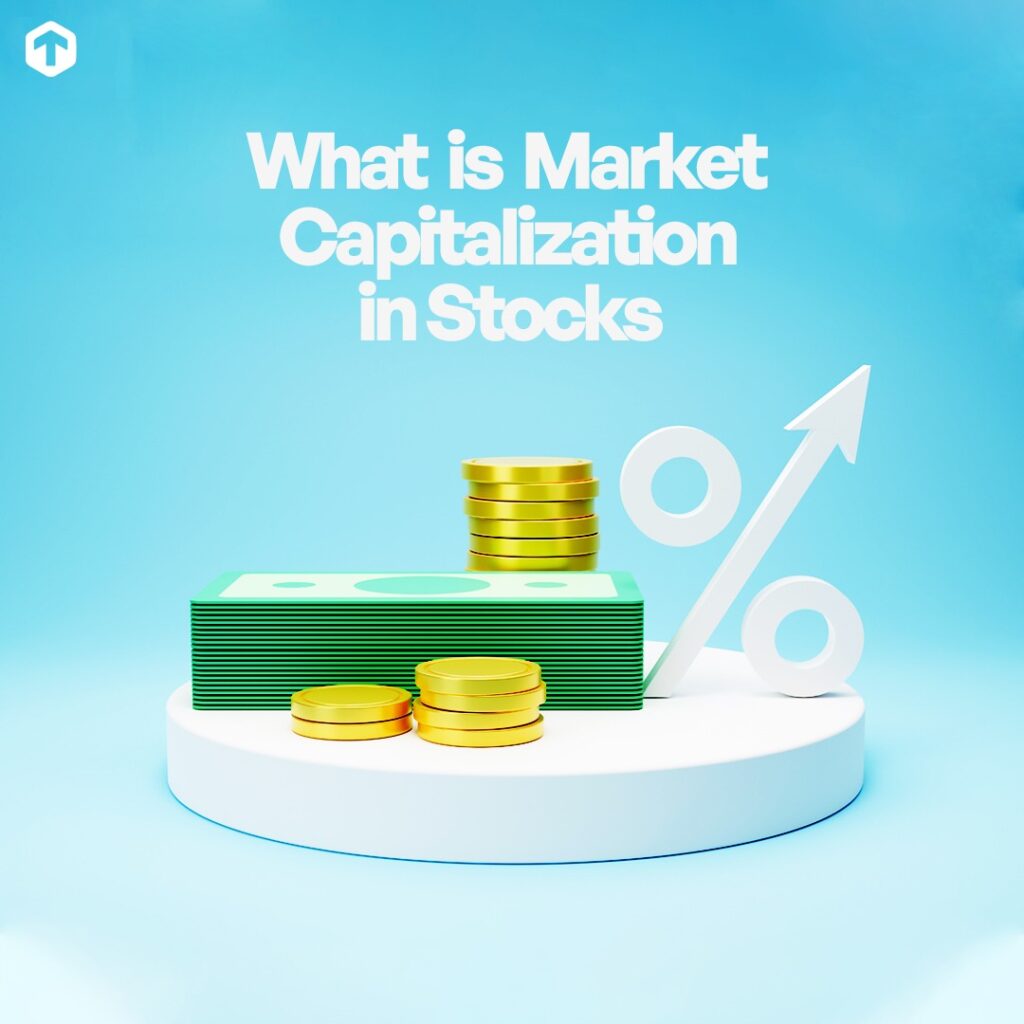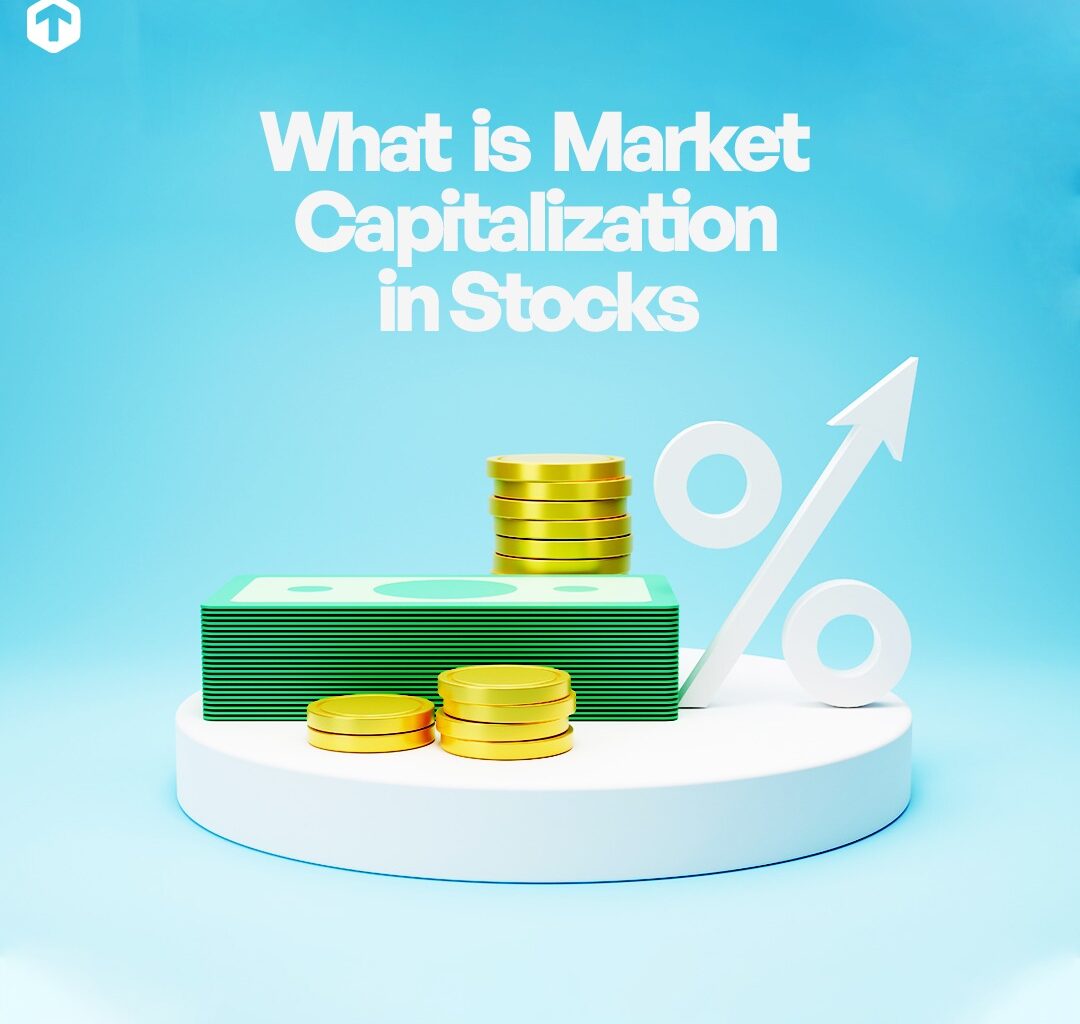Have you ever wondered how investors determine the value of a company? It’s not just about looking at a company’s revenue or earnings – there’s another important metric to consider which is “Market Capitalization.”
This metric is a measure of a company’s total value on the stock market, and it can tell you a lot about the size, growth potential, and risk of a company. In this blog post, you will understand what market capitalization is, how it’s calculated, and its categories.

Understanding Market Capitalization?
This is the total value of a publicly traded company’s outstanding common shares owned by stockholders. It is also known as market cap.
Market capitalization is just one way to measure a company’s worth, and it doesn’t give the full picture. It only measures a company’s equity or the value of its shares. It doesn’t take into account the company’s debt or other factors that can affect its value.
Market cap is calculated by multiplying the market price per common share by the common share outstanding. For instance, if a company has 10 million shares to sell at $100 a share, the market cap will be $1 billion.
What are the Categories of Market Capitalization?
- Large-cap: The company has a market capitalization of $10 billion or more. In other words, it’s a company that’s worth at least $10 billion on the stock market. They often have a reputation for producing quality goods and services, and consistent dividend payment. Large-cap companies are often well-established and dominant players in their industries. Examples of large-caps include; Walmart, Disney, and Johnson & Johnson. Because they’re so well-known and stable, they’re often seen as less risky investments than smaller companies.
- Mid-cap: This has a market capitalization between $2 billion and $10 billion. So they’re bigger than small-cap companies, but smaller than large-cap companies. Mid-cap companies are often considered to be somewhere in the middle in terms of risk and potential growth. They can be a good choice for investors who want to find a balance between risk and reward.
- Small-cap: This company’s market capitalization is not more than $2 billion. They are typically newer and less established than large-cap companies. They might be newer brands that haven’t yet become household names, or they might be older companies that have struggled to grow. However, because they’re smaller and less established, they’re considered riskier investments than large-cap companies, but they also have more potential for aggressive growth.
How Does Market Cap Affect Stock Investment Strategy?
Risk and Stability
- Large-cap stocks (e.g., multinational companies) are generally stable and less volatile, which can be reassuring for risk-averse investors. These stocks offer steady growth and often pay dividends, making them ideal for long-term, conservative strategies.
- Mid-cap stocks are companies in a growth phase. They balance some stability with higher growth potential than large-caps, making them suitable for investors who can handle a bit more risk for greater returns.
- Small-cap stocks are newer or smaller companies that are often highly volatile. While they can bring significant returns, they also carry higher risks, so they are best suited to investors with a high-risk tolerance and a focus on aggressive growth.
Growth Potential
- Smaller companies have more room for expansion, so small-cap stocks can grow rapidly and potentially provide high returns. However, they’re often vulnerable to economic fluctuations and may lack the resources to withstand downturns.
- Large-cap stocks may have less dramatic growth but can provide stable, incremental gains. They’re usually leaders in their industries and are better equipped to survive market volatility.
Portfolio Diversification
- Market cap diversification is a popular strategy to spread risk. For example, combining large-cap, mid-cap, and small-cap stocks in a portfolio can help balance potential high returns with stability.
- In Nigeria’s market context, adding a mix of local and foreign large-cap stocks may provide the security of established companies, while small-cap stocks offer exposure to emerging sectors.
Investment Goals and Time Horizon
- For short-term goals, large-caps are often favored because of their stability. They’re less likely to experience wild price swings, which can be crucial if you’re planning to liquidate investments soon.
- For long-term growth, especially for younger investors, a mix of mid-cap and small-cap stocks could offer the growth potential needed to build wealth over time.
Read: Asset Allocation: What Does it Mean and How Does it Work?

FAQ
How Can I Incorporate Market Cap in My Portfolio?
You can incorporate market cap into your portfolio by choosing a diversified mix of small, mid, and large-cap companies. This can help you balance risk and potential growth.
A good rule of thumb is to invest 60% of your portfolio in large-cap companies, 30% in mid-cap companies, and 10% in small-cap companies. This is called the “60-30-10 rule.” Although it’s just a general guideline, you can always adjust the percentages to fit your own risk tolerance and financial goals.
Conclusion
Market capitalization is an important concept for investors to understand. It’s a useful way to measure the size of a company and can help you decide where to invest your money. But remember, it’s just one piece of the puzzle.
It only measures a company’s equity or the value of its shares. It doesn’t take into account the company’s debt or other factors that can affect its value. However, there are many other factors to consider when investing so don’t just make decisions only based on the company’s market value.
For an investment made easy, download the Trove app and enjoy a seamless experience.





